From the West Hartford Archives: Bishops Corner, Southwest Corner

Audio By Carbonatix
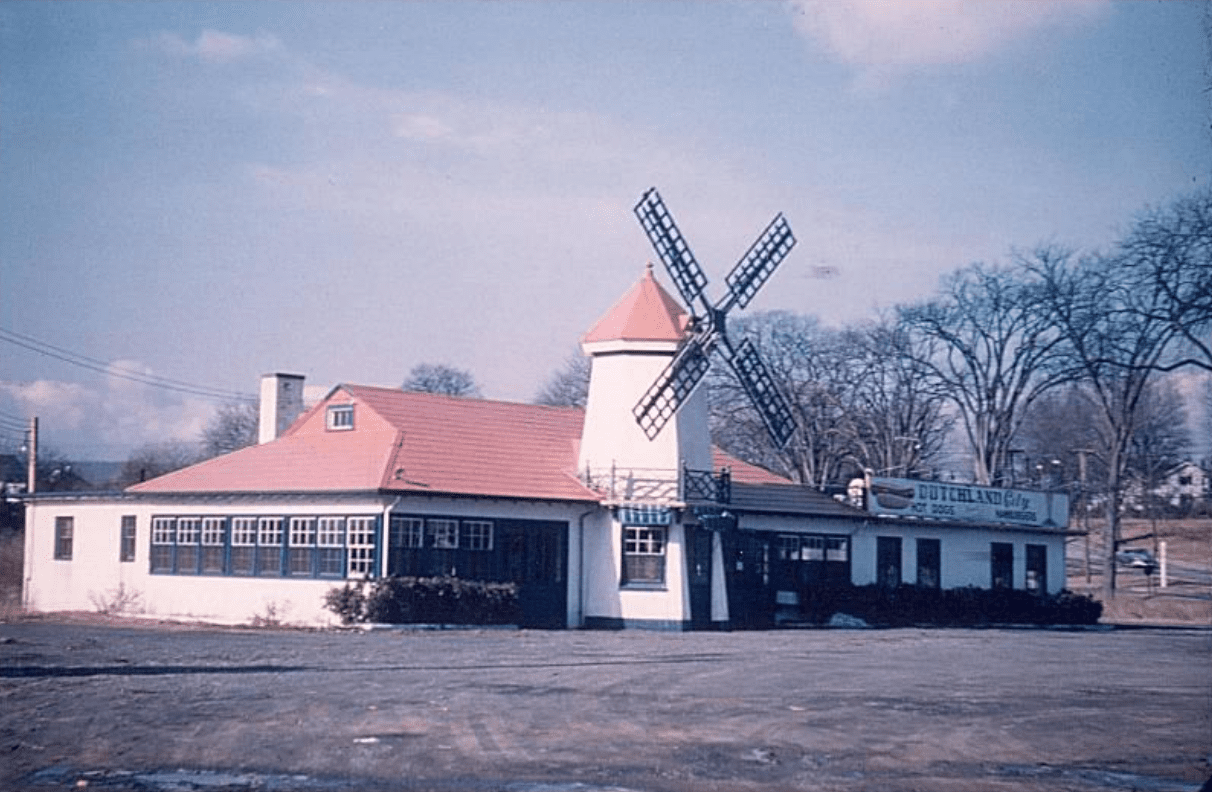
Dutchland Farms. Photo courtesy of Noah Webster House & West Hartford Historical Society
Historian Jeff Murray takes a look into West Hartford’s past to uncover some surprising information, stir up some memories, or reflect on how much life has changed – or hasn’t changed at all. Enjoy this week’s ‘From West Hartford’s Archives’ …
By Jeff Murray
Bishops Corner was named after a man who lived at the northeast corner of Albany Avenue and North Main Street, Joseph Bishop, who had originally been a clock assembler. The Hartford Courant claimed in 1954 during a write-up on the 100th anniversary of the town’s independence from Hartford that upon moving from Connecticut to Illinois as a young man, Bishop sought the services of the lawyer Abraham Lincoln when the state sued him for selling clocks, which was against the law there. Apparently Lincoln won the case and so if this is true, Bishops Corner has quite a notable connection to the history of the United States.
Back in Connecticut, Bishop became a tobacco buyer and conducted a tobacco business that thrived at the northeast corner. At its height, the business employed more than 50 people. His daughter Lucia married in 1858 to Charles S. Griswold, who entered the business with his father-in-law at the corner. Griswold had grown up at the historic family homestead at 114 North Main Street and he and his siblings were immense movers and shakers in West Hartford. After Joseph Bishop’s death in 1906, the business passed to the Griswolds through the 1920s.
Despite the name, the Bishops didn’t own the other corners at Albany Avenue and North Main Street. The southwest corner was actually in the possession of the Barber family when the town became independent in 1854.
Elihu Barber had married Emily Clark in the 1840s and they lived in a house at the entrance to Flagg Road on the south side. Unfortunately, Elihu died quite early in their marriage and Emily re-married to Hezekiah Webster, who was also widowed. Emily, too, outlived him when he died in 1880 and she lived at the corner in the house for the rest of her life, often renting out flats to vacationers or those who came to the state to work in the city. Her daughter, also Emily, married Seth P. Griswold, a brother of the son-in-law of Joseph Bishop, and moved to the Center, where they made their own history.
The elder Emily’s property after her death in 1897 came into the hands of the younger Emily Griswold, who continued renting it out.
South of their house was the land and home of the Caswells, where Lord & Taylor would eventually be built in the 1950s. William Caswell and his wife Mary Montgomery built a house on this site in the mid-1890s. Caswell’s family had been in West Hartford for many decades, his father having made a living as a farmer on the west side of Mountain Road near the Bloomfield town line. The Caswells had petitioned against independence from Hartford in 1854 and part of their land was eventually condemned in the 1890s for Reservoir Number 6 on the north side of Albany Avenue.
The address given to their home was 315 North Main Street, which can be traced to the current southern edge of the Bishops Corner plaza, where the entrance tracks along the northern line of the houses on Pioneer Drive. The family occupied the house for a considerable amount of time and the children would have had a great view of the development of the north end of town from the 1890s to the 1940s.
Three of the children – Jean, Thomas, and Dorothy – never married and lived together at the house. In the case of Thomas, who was employed as a salesman for the Daniels Mill Company, he died at 3 p.m. on April 29, 1910 at the home, just hours after being counted in the 1910 census. After that, Jean and Dorothy passed the time together in the house. After Jean’s own passing in the summer of 1945, Dorothy, now the last surviving sibling, sold the property. It was now just a few years away from being changed forever.
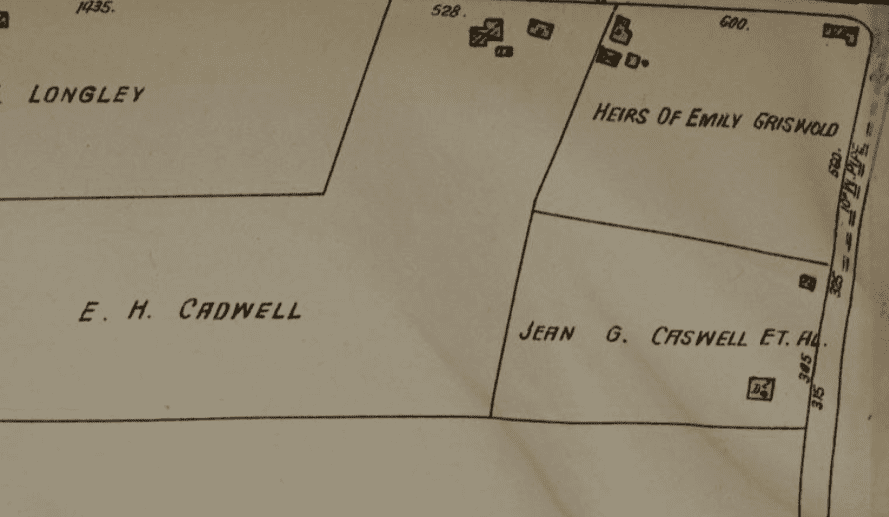
The southwest corner of Albany Avenue and North Main Street in 1923 – the boundaries of the Barber-Webster-Griswold and Caswell tracts became the current boundary of the commercial plaza at Bishop’s Corner. The irregular piece of land owned by E. H. Cadwell was where Blue Ridge Lane and Braintree Drive were laid out.
In 1933, after the heirs of Emily Griswold sold the immediate corner land, Dutchland Farms opened on a small site there under Charles M. Pierce as a restaurant and dairy bar. Conducted across New England as a chain, it was known for its windmill built into the side and it sold hot dogs and ice cream through the 1940s. Children’s pony rides were also offered for a number of years.
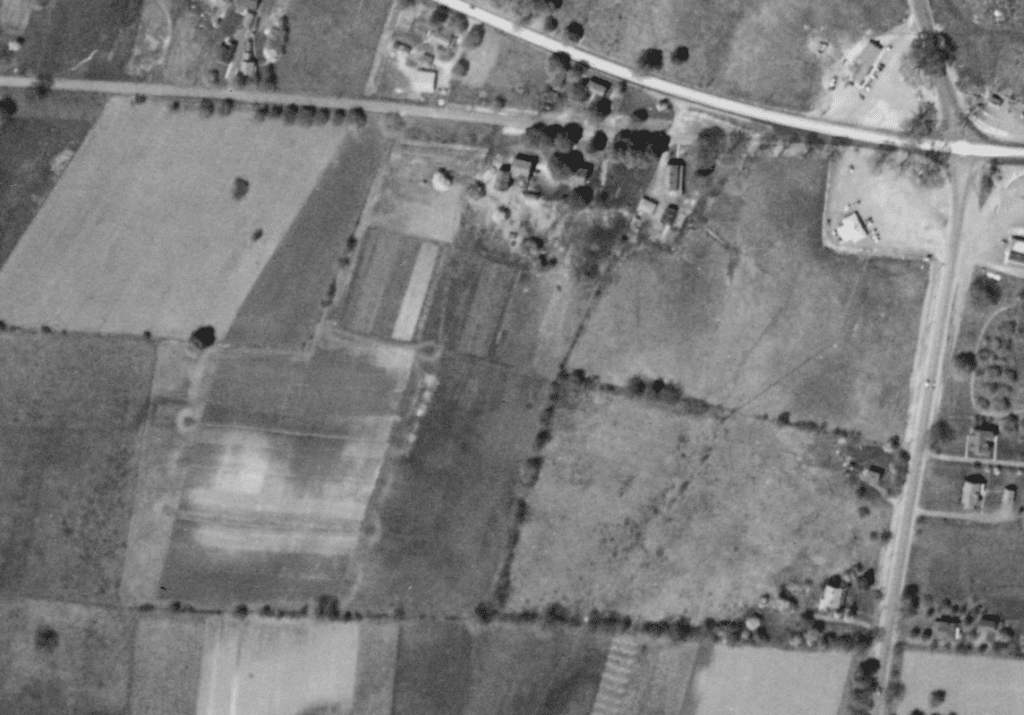
An aerial view of the corner in 1934 – the same property lines can be seen
In September 1950, the second set of proprietors (who had taken over after Pierce went bankrupt and who changed the name to Dutchland City) filed for bankruptcy and the establishment closed down permanently. The Dutchland site is etched into the memories of the people who grew up in the 1940s; however, the opportunity seemed to be ripe for a more permanent and larger business on the property.
Lord & Taylor signed a lease in 1951 and development began under William A. Mauser, who purchased the entire property and demolished the Dutchland building (fortunately, the windmill was saved and moved to Gledhill Nursery and was later retained during housing redevelopment). Mauser planned the Lord & Taylor building on the site of the two old Caswell houses (315 and 325 North Main Street), as well as an adjacent shopping center at the immediate corner where Dutchland Farms was. However, despite the business fanfare, it faced heavy opposition from the neighborhood.
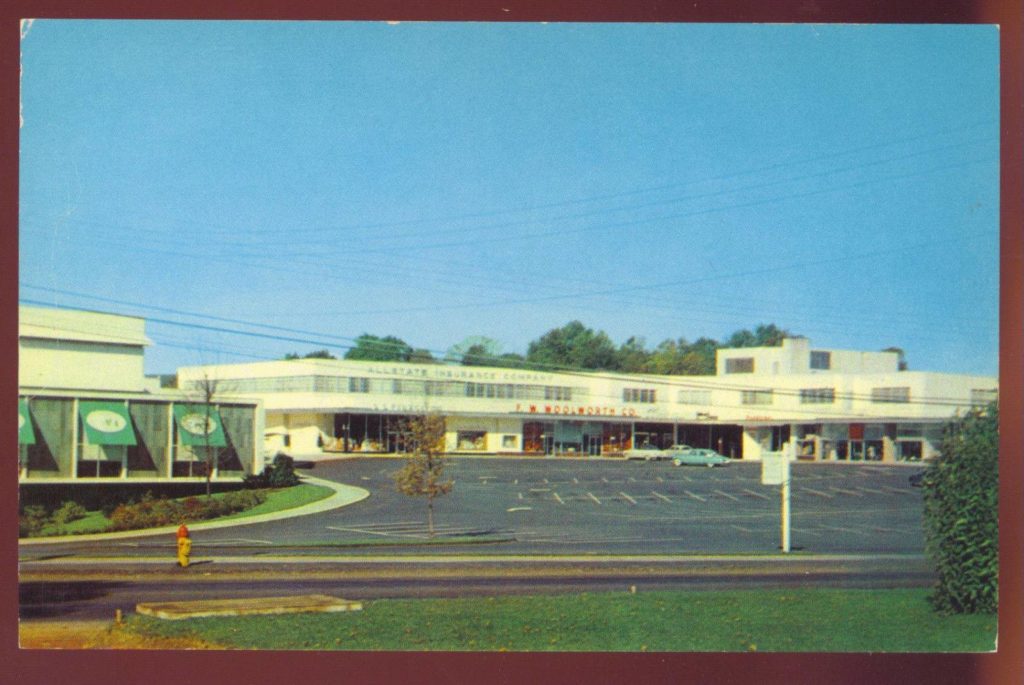
Bishops Corner shopping plaza after Dutchland Farms was torn down.
Photo courtesy of Noah Webster House & West Hartford Historical Society
In February 1951, the West Hartford Home Owners Association issued a series of ads in the paper titled “Keep West Hartford Residential,” sarcastically displaying photos of “handsome” buildings at three of the four corners, including the Dutchland restaurant and a gas station across the street. With the growth of the town after World War II, business leaders and Mauser had pushed for extensions of business zoning to a much larger area to account for the construction and adjacent parking lots. The association warned that uncontrolled growth would steadily degrade the housing along North Main Street all the way to the Center with an ominous tagline, “There is no known cure for this kind of cancer.” Another advertisement features a photo of a boy who lived in the neighborhood with the warning that if Bishops Corner was expanded beyond the local stores and commercial blocks were built, West Hartford would become a less desirable place to live and it would push people out, as well as add unnecessary danger to children due to increased traffic.
The Town Council eventually approved the zoning change and the housing association brought the case to court, leading to the state supreme court upholding the decision in 1952. The Lord & Taylor department store was built and officially opened in 1953, followed by the adjacent shopping center a year later. The tenants in the first year were Allstate Insurance Company, Hartford National Bank & Trust Company, F. W. Woolworth, Peck & Peck, S. S. Pierce & Company, Doubleday Book Shop, A. S. Beck Shoe Company, Georg’s Gift Shop, Schultz Beauty Salon, Connecticut Cleaners, Hudson Hosiery Shop, W. A. Crosscup, Pumpernik’s Restaurant, and Valet Barber Service.
This sentiment of progress in West Hartford was a direct reflection of the state of the country in the 1950s. Americans after World War II experienced a wave of stability and economic prosperity (albeit concentrated within select groups that weren’t barred from enjoying it). The mass production of the wartime era gave way to the mass consumption era, helped along by the spread of cars, advertising, television, credit cards, and new technology embraced by not just the children and teenagers of the postwar baby boom, but by many women who now had better access to it all.
Advertisements of the shopping center at Bishops Corner in 1954 are excellent windows into why many people in town fell in love with the development – words like “brand new,” “modern architecture,” “convenient” (the word given for why giant parking lots were essential luxuries), and “window shopping.”
It is naïve to think that West Hartford was steamrolled by big business against its wishes. The opposition by the neighborhood to the “uncontrolled” expansion of commercial business was a very real sentiment by people who felt that the town was losing its value as a collection of country farms and dirt roads against a backdrop of giant white building blocks. But the suburban population growth and increased economic mobility just years after the Great Depression was the reality for many more.
Our own existential battles waged across town on housing developments today are just as much a reflection of 2020s America as the pushback in the 1950s. Seventy years from now, one can only hope this will all be important enough to be discussed in the historical articles of the 2090s.
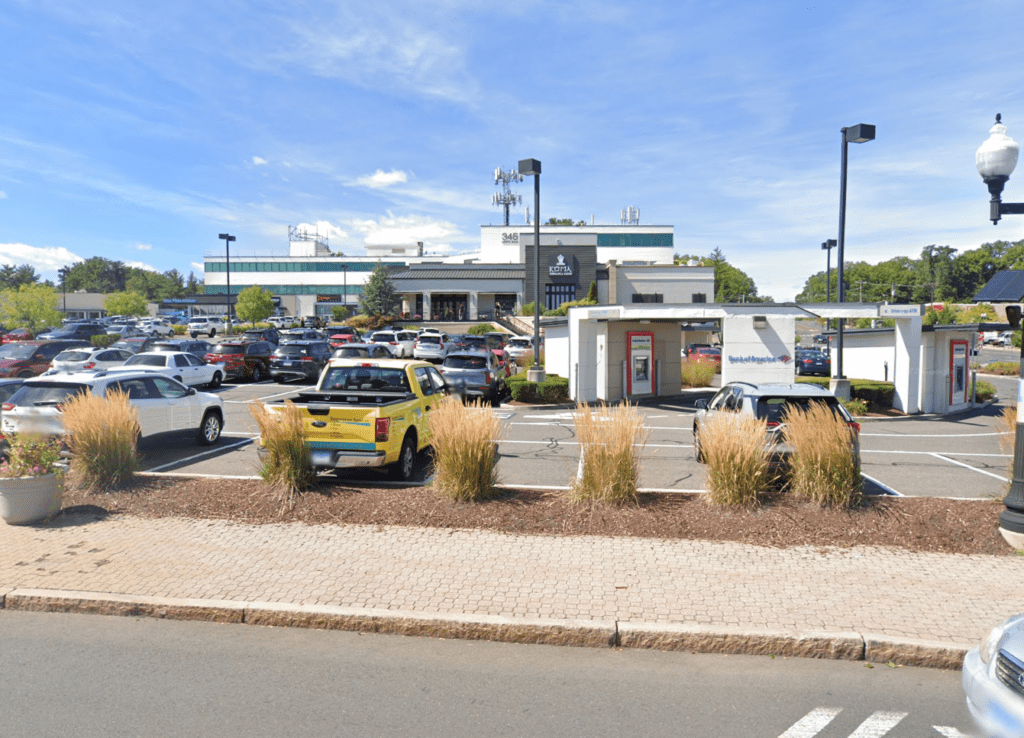
Google Street View of the southwest corner of Bishops Corner, looking west from North Main Street, with Flagg Road at the right
Jeff Murray was born and raised in West Hartford and has been involved with the Noah Webster House & West Hartford Historical Society since 2011 when he was a high school student and won the Meyer Prize for his essay on local history. Jeff routinely volunteers as local history researcher uncovering information for numerous museum programs such as the West Hartford House Tour and West Hartford Hauntings. Jeff works as a data analyst at Pratt & Whitney.
Like what you see here? Click here to subscribe to We-Ha’s newsletter so you’ll always be in the know about what’s happening in West Hartford! Click the blue button below to become a supporter of We-Ha.com and our efforts to continue producing quality journalism.



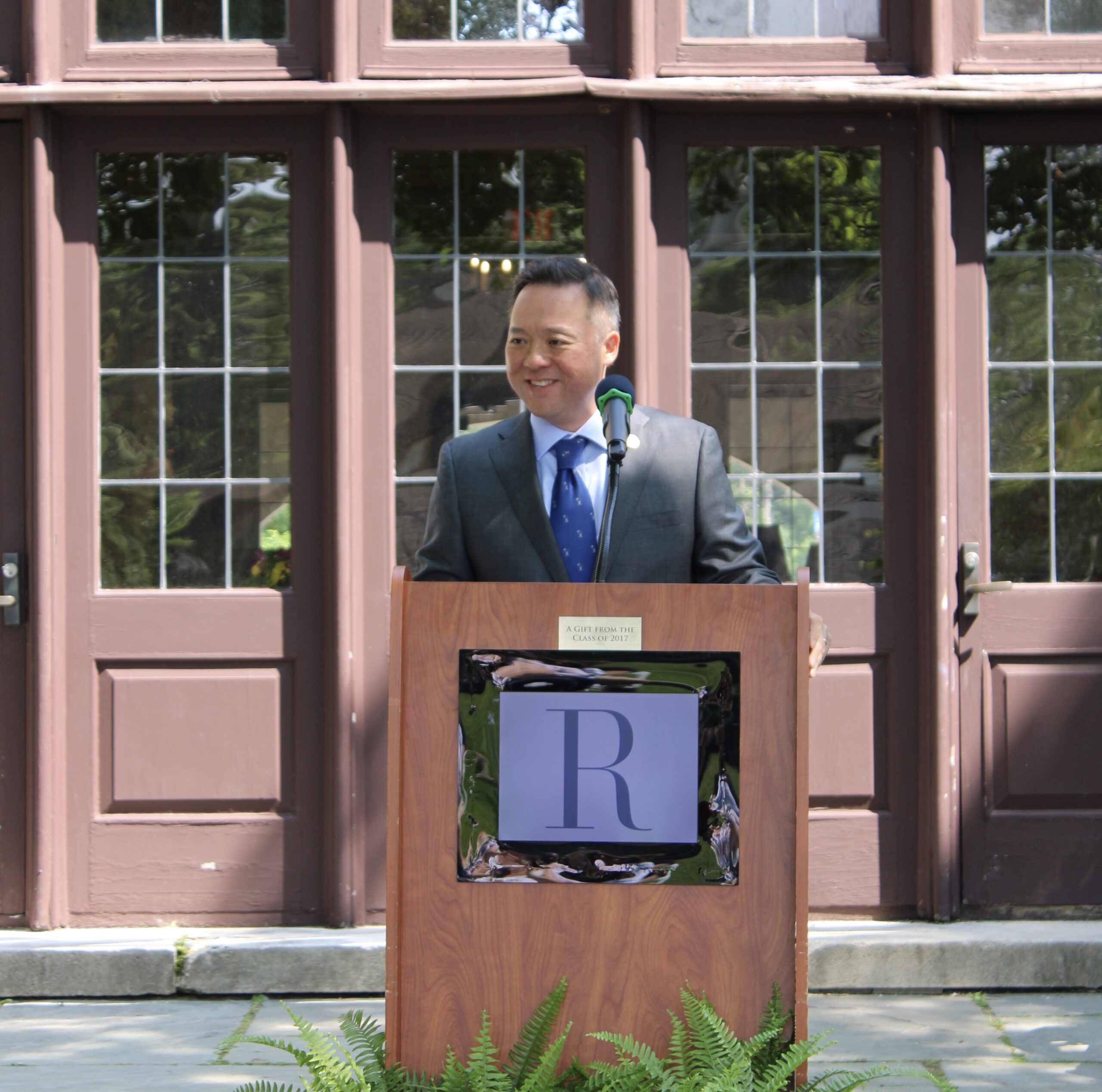
I really appreciated your “by the way” line regarding the windmill. As a new resident in Gledhill I wondered about the origin of it, I had no idea it was moved from the corner to the nursery! It is so sad it’s fallen into disrepair. The area that it is in is in a state of limbo, labeled an “open space” by West Hartford meaning it can’t be built or worked on, and the city doesn’t even want us mowing the weeds in the area.
Hi Andrew,
Agreed; however, I’m happy it still stands almost 90 years later at least somewhere in West Hartford! Many more remnants in West Hartford were steamrolled over in the 1910s-1960s, so it’s nice to see some retention even in the modern day.
Unfortunately it seems T&M abruptly destroyed the windmill without warning! So frustrating
Who named Flagg Road, and why does it have that name? Who was Gurdon Flagg, and why is my home at 847 North Main Street named for him?
Hi Susannah,
Not sure who in particular named Flagg Road, but the Flagg family was very prominent on it. Before 1798, Albany Avenue from Hartford followed the path of Flagg Road west of North Main Street. After that, a company built what is now Albany Avenue west of Bishop’s Corner to New Hartford, and then eventually to Albany, NY. A lot of the land on Flagg Road was acquired by the Flaggs (namely Abijah Flagg and Thankful Merrill) from the Merrill family in the early 1800s. This is where Westmoor Park is.
Their son George Flagg owned a shoe shop at the southeast corner of Bishop’s Corner. Their grandson (son of George) was Gurdon Flagg, who lived at 847 North Main St until his death in 1889. The house is sometimes listed as a Revolutionary era house or even earlier, but there isn’t as much consensus as we’d like. In 1929, when the house was sold out of the Flagg family by Gurdon’s granddaughter Alice, the Hartford Courant said that the house was only “nearly 100 years old” and that the property had been acquired by the Flagg family in 1837. The Connecticut Historical Commission’s inventory on the house says that research by Elizabeth Hatheway dated the property to about 1777 and that some features support this, but that many of the features indicate the house was updated in the mid-1800s. Gurdon Flagg, who lived from 1809 to 1889, probably was the first Flagg to live there and it remained in the family for many years after him.
Loved the historical article about Bishops Corner. I still remember, as a little girl, getting a hotdog at Dutchland Farms and then having a pony ride around the corner from the building. P.S. – as I recall, they were great hotdogs!
Hi Jeff,
I own the 1766 colonial at the east end of Flagg Road, referred to as the Moses Brace/Uriah Cadwell house
I wonder if this is the house you’re referring to: “Elihu Barber had married Emily Clark in the 1840s and they lived in a house at the entrance to Flagg Road on the south side.”
Hi Mike,
The Cadwell house was at the eastern edge of the Cadwell property, with the land directly to the east being the Barber-Clark land. If you check the 1923 map in the article, 11 Flagg Road is the one owned by E. H. Cadwell in the land shaped like a reverse “L”. That’s the land that Blue Ridge Lane and Braintree Drive were laid out in.
The two houses east of that were where Elihu Barber and Emily Clark lived in. I’m not sure which one she actually lived in or rented out though. These were both torn down and are where the plazas and rear parking are.
Cadwell’s house had pretty good continuity based on the 1923 map – they must have canvassed right before Edward H. Cadwell and his wife died in the summer of 1922. He was the son of Uriah T. Cadwell (who was son of Uriah, the purchaser of the property from Brace). I believe his daughter Nellie inherited the house after and lived there into the 1940s at least.